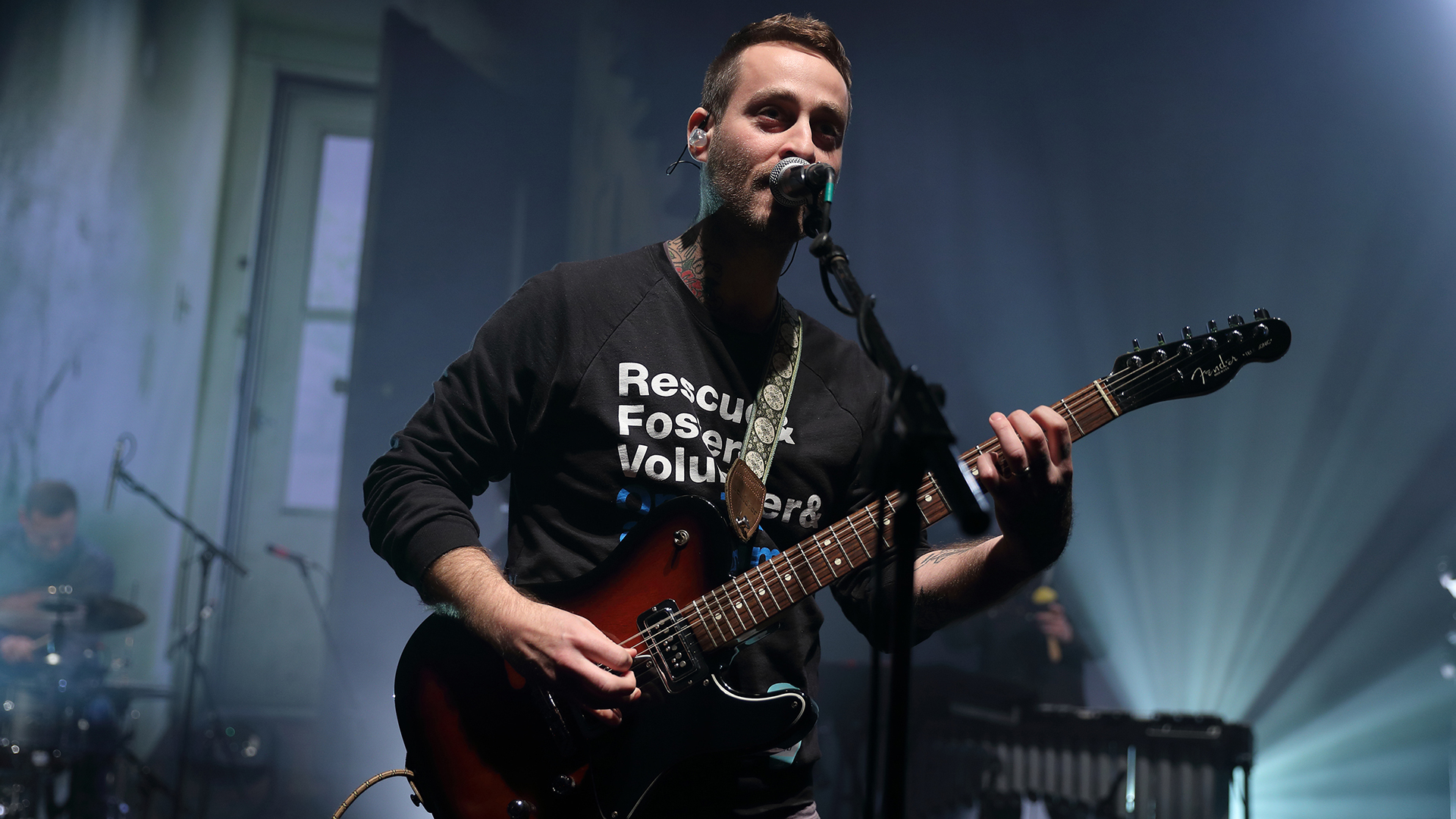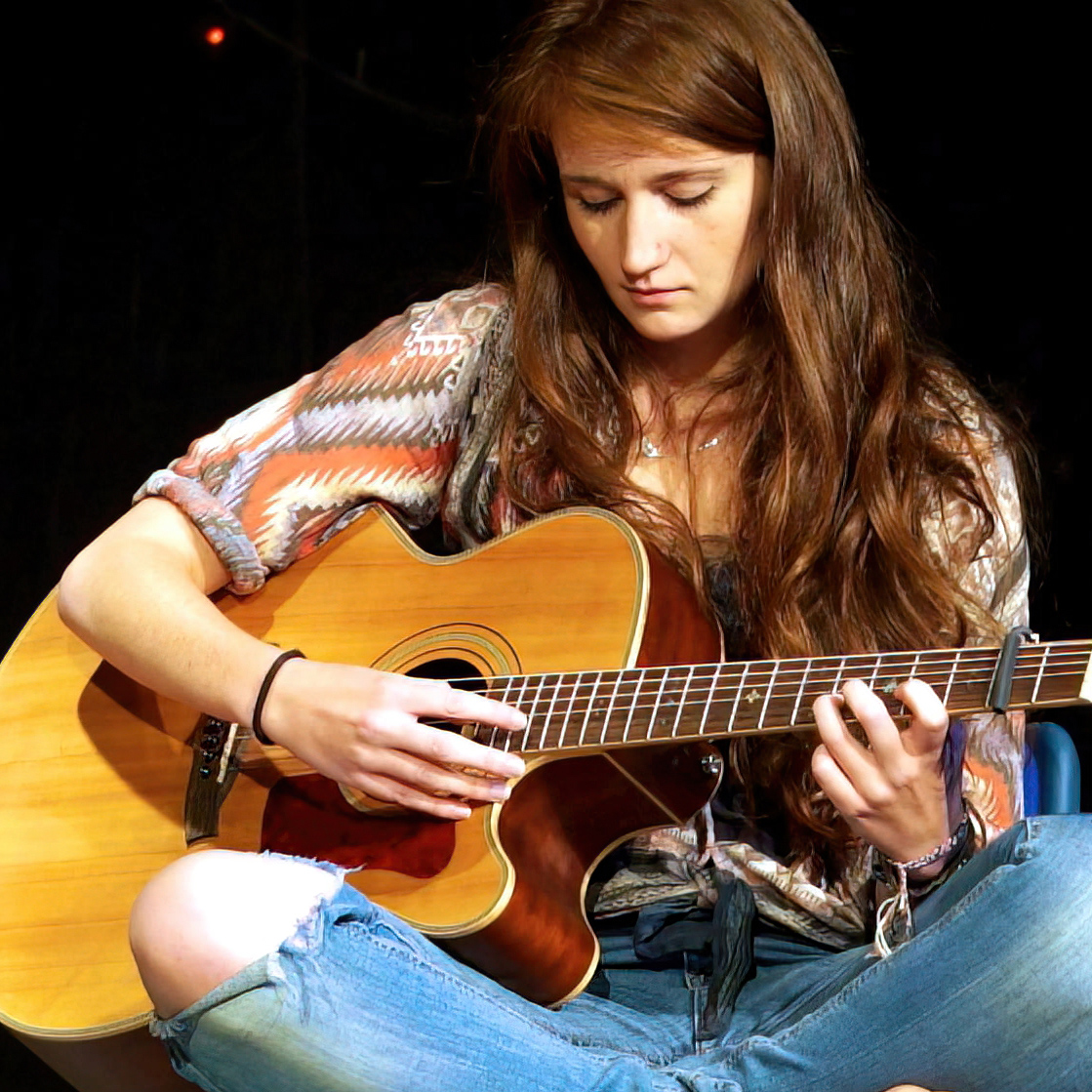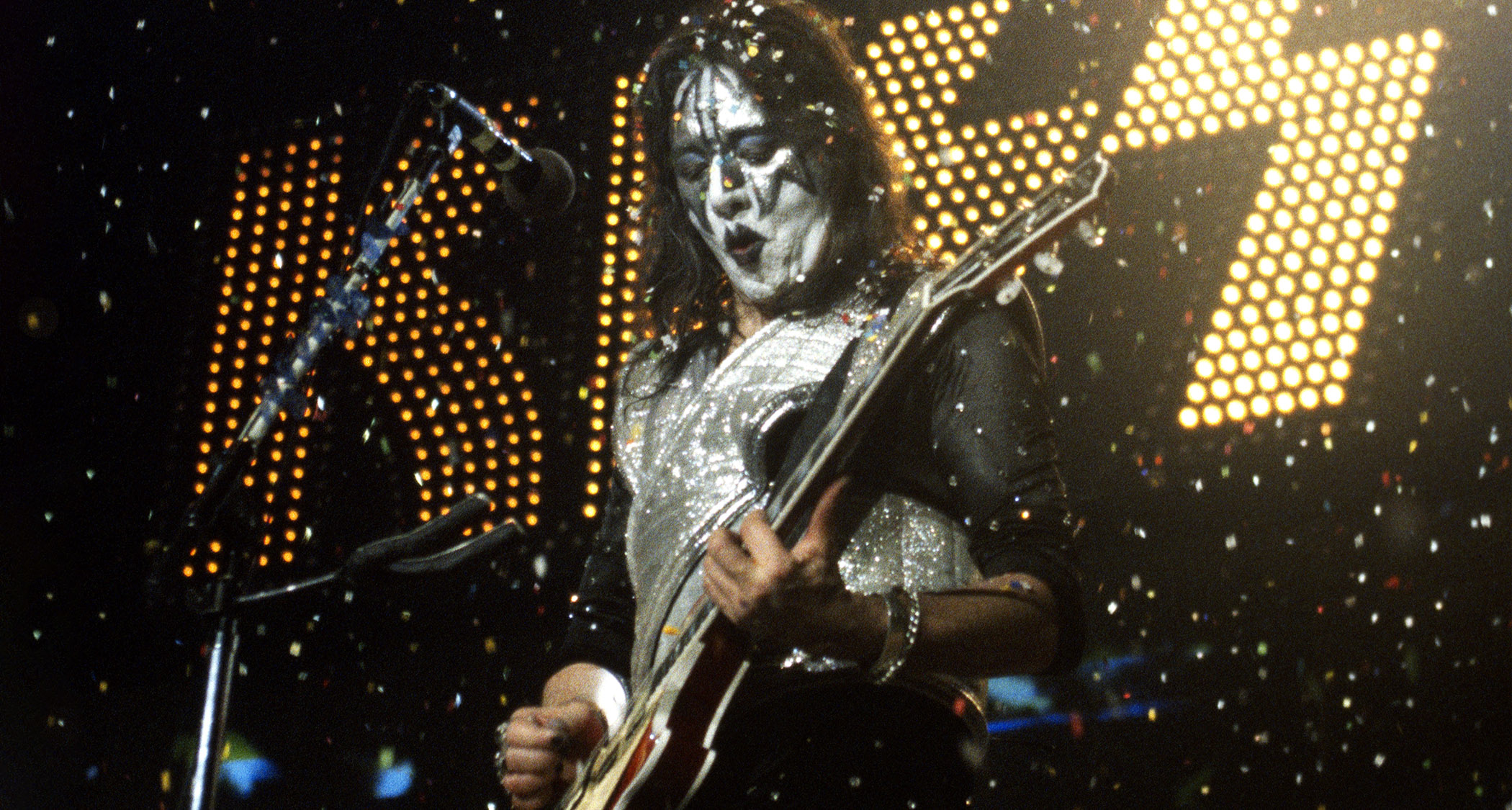“We played a bunch of really awkward shows with both of us staring at our tuners the whole time and then we broke up for 15 years”: Math-rock pioneer Mike Kinsella on his unlikely journey to cult guitar hero status with American Football
As his latest Owen album looms, the guitarist reflects on how he discovered the tunings that made him so influential, doing it all without pedals and why he can only play Teles

Attaining cult status isn’t something an artist can plan for. It’s certainly not something American Football’s Mike Kinsella had on his card when he and his bandmates – Steve Holmes and Steve Lamos – went their separate ways right after recording their self-titled debut back in 1999.
Kinsella began writing and releasing music under the name of Owen, while pockets of adoration for the American Football album proliferated across the US and beyond. For those in the know, they became a sonic reference point of almost Biblical importance as twinkly guitar tones, alternate tunings and uncommon time signatures boomed in the midwest emo, post-rock and math-rock scenes of the mid-2000s.
Now, 25 years after the album’s release and a decade into American Football’s reunion, it still tickles Kinsella to think that the music he and his college buddies cooked up has endured.
“We’re nothing but lucky, and we all still won’t accept that this could be a full-time band,” he jokes, speaking from his home in Chicago. “We’re like, ‘No, that was just a band we were in at college!’”
As he returns with his 11th Owen record, The Falls Of Sioux, we take a deep dive into the two sides of Kinsella’s musicality: the acerbic acoustic songsmith and the Telecaster-toting math-rock pioneer.
What were your musical goals for this new album?
“I think it was just to make myself excited or interested, which is open-ended. The last album was written going through a divorce, and it was cathartic and serious in all these different ways.
All the latest guitar news, interviews, lessons, reviews, deals and more, direct to your inbox!
“With this one, I wasn’t bound by a story or anything. It’s just a grown man trying to keep himself interested! It’s probably more varied than any other solo record because there were really no restrictions.”
How does your approach to guitar differ when writing for Owen?
“In the back of my head with the Owen stuff, I have to be like, ‘Okay, this is ultimately just going to be me on a stage by myself.’ So, I have to think about whether it’s interesting enough and if I’m carrying the melody or the root notes. I need to know if the song moves enough with just me.
“Whereas, with American Football, I can absolutely play a noodle that’s in 11/4 and not care, because Nate will be doing something and Steve will be doing something.”
You’ve cited Steve Reich as a big influence in your early days. What attracted you to his compositional style?
“Yeah, all of us – or me and Steve Holmes at least – were in college and we weren’t discovering pot as much as we were discovering Steve Reich. It kind of blew our minds!
“I remember being in our freshman year, before we started American Football proper, and being interested in how one thing was moving while another part was staying the same. We thought that was so cool. I mean, we were coming from a truly indie-punk DIY vibe, so everything blew our minds that wasn’t screaming!”
There’s still something quite orchestral about your solo arrangements, particularly on this new album…
“I had a lot of help with that from working with Sean Carey. His stuff is very pastoral and that’s part of why I’m a big fan, so I knew he was going to add atmosphere. It’s a little problem every time we’re throwing the layering stuff around in the studio because, again, I’m aware that it’s going to be me playing this live.”
All the standard stuff – pop music and radio shit – just bores me… I guess I’m trying to excite or challenge myself
Could you talk us through a track on The Falls of Sioux that you particularly enjoy?
“There’s one called Cursed ID. When I was in pre-production, talking to Sean and sending him demos, I thought it sounded like it could be a cool Paul Simon song. It’s kind of dainty. Then I tracked these really garbagey drum demos on my phone, just to give it a vibe, and at some point it became really janky.
“That song is also in the dumbest tuning. Usually, the whole goal with my tunings is that they’ll sound interesting or nice when strummed open. This one is totally the opposite. The B string is tuned lower than the G string, so every time I’m hitting it – in my mind – it’s the most interesting part of the song.”
What’s the magic of non-standard tunings for you?
“I don’t know what I like about open tunings, but what I have known since I was about 15 is that all the standard stuff – pop music and radio shit – just bores me. So I guess I’m trying to excite or challenge myself.
“Standard just rings so ‘coffee house’ to me and I’m well aware that, in many ways, what I do shares 99.9% of the DNA of a chimpanzee who plays in a coffee house. It’s a guy with an acoustic guitar playing sappy songs quietly while sitting down. I understand I’m doing the same thing, but I just want it to sound a little different.”
We played a bunch of really awkward shows with both of us staring at our tuners the whole time and then we broke up for 15 years
Using unconventional tunings has become relatively common practice today, but how did you first get into it in the ‘90s?
“The first time I thought of it – or even noticed it – was when I was in another band in high school, Cap’n Jazz. The guitar player, Victor Villarreal, was a total whizz and I learned from him not only the tuning thing, but also how to play with a pick and use your other fingers to do little flourishes.
“The last two songs Cap’n Jazz wrote were in FACGCE and I don’t know where he found it. The internet existed, but only for the government and Harvard! So he kind of stumbled on it and became addicted.
“My recollection is that the other guitar player quit the band, but then started another that was essentially based on that FACGCE tuning. Their sound was pop-punk, but real bright, with a bunch of ringing notes and giant chords.
“So that totally influenced me. I got into Mark Kozelek and Red House Painters and that was probably where I learned DADGAD. If I couldn’t reach a note playing that stuff or trying to write my own stuff, I’d just tune a string down even more. It took off from there.”

How did you and Steve Holmes figure out that using a different tuning each within the same song was a viable idea?
“I don’t know! Firstly, we had no aspirations of being a working band. We were roommates in college and we’d just spend Friday nights sitting on a couch discovering different guitar tunings and trying to get these patterns to fit.
“We were just messing around with every dumb thing and we’d figure out what the tuning was later. It just sounded cool. Then we played a bunch of really awkward shows with both of us staring at our tuners the whole time and then we broke up for 15 years!”
The gear world has evolved significantly since that first American Football record. How much of what you were using back then do you still use now?
“None of it! We were on our friends’ borrowed guitars and amps. We had no pedals. The sound of the record is cool, but there was probably a point during those 15 years off where I felt like it was a little cringe. It’s just so youthful.
Everybody made an album in high school and broke up… nobody would care if the songs weren’t kind of cool
“I bet we had one tuner that we borrowed for the recording session and that was it. There’s no bass, so to make the guitars fuller, we doubled or tripled every guitar part and that gives it this chorus.
“Now you can buy a shimmer pedal to recreate what we did, but we did it manually and I think it was just dumb luck. By doing it the stupid way, it became our own thing. Now anything you do that’s stupid and has triple guitars through a clean amp with no bass sounds like American Football.”
These kinds of circumstances, as well as the breakup, have perhaps become as much part of the legend as the music itself.
“Totally! Everybody made an album in high school or college and broke up. We’re all aware of the way the myth became bigger. But what I will say is that nobody would care if the songs weren’t kind of cool.
“With the earnest youthfulness, you can tell that we were just discovering stuff. I think when kids of that age are discovering that same shit, they appreciate it. It speaks to them because they’re also interested in hearing new things.”
What gear have you acquired in the intervening 25 years and what are you using most right now?
“I can only play Telecasters. It’s kind of all I’ve ever played. I’ve tried playing a Les Paul a couple of times, just because I had to, and I did not enjoy it.
“Fender Twins are our backline every night. There’s somewhere around 3.5 and 5 on the volume where they’re clean, but they’ve got a little bit of grit and a little bit of push, and that’s my comfort zone.
“If I want to dig in, I get the grit. If I want to lay back with how hard I’m picking, it’ll blend in really nicely. I can play big or small, so I’m a fan of them.”
“Pedal-wise, the Keeley Caverns Delay Reverb and the EarthQuaker Avalanche Run are currently my favorites.”
What was your go-to acoustic for the new record?
It was always the guitar I was totally willing to lose or break – my kids used to draw on it – but now it’s kind of priceless
“I have a 1967 Martin that I only pull out once every two years to track with. That’s probably the bulk of it. It’s truly lovely. It stays in tune. It’s unbelievable. Then, my go-to traveler is like my best friend.
“In college, my roommate had an acoustic guitar that he never played and I played it every day for two years. Upon graduation, I was like, ‘I’m taking this!’ It’s a Guild. I bet at the time it was about $600 and I don’t know if it sounds good, but I’m so comfortable with it. It was always meant to be the guitar that I was totally willing to lose or break – my kids used to draw on it – but now, that one’s kind of priceless.”
Some killer contemporary guitarists – such as Yvette Young – cite you as a major influence. How does it feel to be looked upon as a pioneer by the next generation?
“It’s amazing. She’s incredible. I remember going to Japan for the first time and the band who opened were really big fans of ours. I was already older and they were kids, but when they played, I was like, ‘Holy fuck!’ They were doing what we were doing – but they were doing it so good.
“I think I fell into it and maybe these other players fell into it and just took it to another level. It’s incredible. I watch what Yvette’s doing particularly and feel like I don’t have the brain capacity!”
- The Falls of Sioux is released on April 26 via Big Scary Monsters and it’s available for pre-order now.
Since graduating university with a degree in English, Ellie has spent the last decade working in a variety of media, marketing and live events roles. As well as being a regular contributor to GuitarWorld.com, she currently heads up the marketing team of a mid-scale venue in the south-west of England. She started dabbling with guitars around the age of seven and has been borderline obsessed ever since. She has a particular fascination with alternate tunings, is forever hunting for the perfect slide for the smaller-handed guitarist, and derives a sadistic pleasure from bothering her drummer mates with a preference for wonky time signatures.

